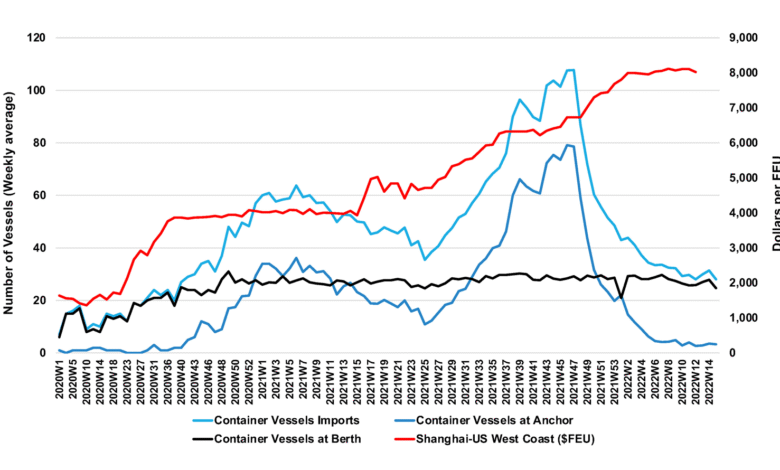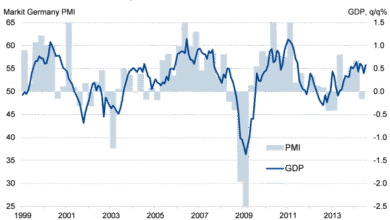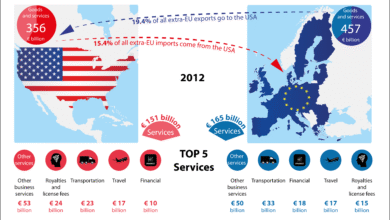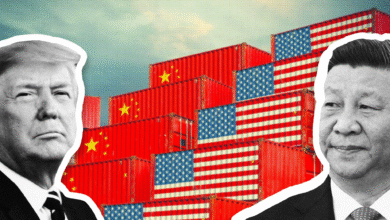Port of Los Angeles Shipping Volume Drops 35% Due to Tariffs

The Port of Los Angeles shipping volume is facing a significant downturn as major American retailers halt their imports from China, heavily influenced by the recent tariffs. This drastic 35% decline in shipping volume is a stark reminder of how international trade dynamics can shift rapidly, creating ripples across the logistics landscape. With approximately 45% of the port’s business relying on shipments from China, the impact of tariffs can’t be overlooked, raising concerns about the future of retail shipments from China and broader economic implications. As companies scramble to adjust their supply chains, the Port of Los Angeles’s logistics operations are being severely tested. The ongoing tensions and tariffs between the U.S. and China present a challenging environment for maintaining robust shipping volumes at one of the nation’s busiest ports.
The shipping capacity at the Port of Los Angeles is witnessing a downturn, with a notable decrease in cargo handling. This staggering shift comes as many American retailers cease imports from China, a crucial source for nearly half of the port’s trade. The repercussions of increased tariffs on goods from China have become evident, leading businesses to explore alternative logistics options and sources in Southeast Asia. As this scenario unfolds, it raises questions about the sustainability of shipping operations and the overall health of retail supply chains. The complexity of these tariff impacts not only affects shipping volume but also carries potential consequences for consumers nationwide.
Impact of Tariffs on Shipping Volume
The recent escalation of tariffs has resulted in a dramatic decline in shipping volume, particularly for vital trade routes from China. Executive director of the Port of Los Angeles, Gene Seroka, highlighted that shipments have plummeted by over 35% as many major retailers have halted imports due to increased tariffs. This reduction not only affects the bottom line of the port but also reverberates through supply chains across the United States, as retailers rush to find alternatives in Southeast Asia or even domestic suppliers.
The tariffs imposed by the U.S. have created a complex environment for logistics and shipping companies. The sharp decrease in the volume of incoming cargo has raised alarms among economists who monitor these economic indicators closely. The fallout from this trade conflict has broader repercussions; as shipments decline, so too does demand for shipping services, exacerbating the existing challenges within the shipping industry.
Port of Los Angeles Shipping Volume Decline
The Port of Los Angeles is experiencing a notable shipping volume decline, as evidenced by the projected drop this upcoming week. With nearly 45% of its operations reliant on shipments from China, the port’s significant volumes are under threat as American retailers respond to mounting economic pressures from tariffs. Retailers are faced with the prospect of dwindling inventories, which could lead to shortages of popular consumer goods.
Seroka’s insights underscore a pressing concern: the potential for extended disruptions in shipping and logistics from major markets. The anticipated cancellation of about 25% of ship arrivals during May could exacerbate the existing strain, leading to further declines in shipping volume from the Port of Los Angeles. Such fluctuations raise critical questions about the future of trade and the resilience of supply chains amid a rapidly changing global economic landscape.
Navigating China Trade Tariffs and Alternatives
As tensions between the U.S. and China continue to rise, companies are exploring alternative sources to mitigate the impact of trade tariffs. This strategic pivot is crucial for maintaining shipping volumes, as many importers reassess their dependency on Chinese goods. Southern Southeast Asian nations are emerging as potential beneficiaries from this shift, providing a broader market base amidst the turmoil of U.S.-China relations.
The navigation of these trade tariffs has prompted logistics companies to innovate and adjust their operations in real time. In light of the substantial tariffs implemented, businesses are now tasked with finding regions that offer competitive pricing without the additional burden of high duties, thus securing more favorable shipping terms and maintaining operational stability.
Future Shipping Trends in Light of Tariffs
Looking ahead, businesses must adapt to shifting shipping trends as tariffs redefine traditional supply chains. The projected decline in shipping volume not only poses immediate challenges but also foreshadows a long-term transformation in how companies source their products. With inventories expected to dip due to reduced shipments from China, retailers may have no choice but to diversify their supply chains to remain competitive in what is becoming an increasingly unpredictable market.
Understanding these emerging trends is vital for stakeholders involved in global trade. Importers and exporters alike must remain vigilant in assessing tariff impacts on shipping volume, staying informed about continuing geopolitical shifts that could affect logistics planning. It’s critical for businesses to implement agile strategies that allow for rapid adjustments to their supply chains in the face of future tariffs and shipping challenges.
Logistics Adjustments Amid Rising Tariffs
The spike in tariffs introduces an urgent need for logistics adaptations within companies heavily reliant on imports from affected regions. With the Port of Los Angeles projecting a steep decline in shipping volume, organizations are feeling the pressure to become more agile in their operations. This adjustment could involve renegotiating shipping contracts, exploring alternative transportation routes, or even increasing domestic sourcing to combat the volatility introduced by tariffs.
Logistics firms are also reevaluating their inventory strategies to cushion the impact of disrupted shipping flows. As predicted shortages loom, maintaining balance between supply and demand becomes essential. Companies are investing in technology and forecasting tools to better anticipate shifts in consumer behavior, aiming to stay ahead of tariffs’ ramifications on their operations.
Retail Shipment Dynamics from China
The dynamics of retail shipments from China have shifted dramatically due to the enforcement of new tariffs. The heavy reliance on imports from China has left retailers at the mercy of international trade policies, which directly affect their ability to replenish stock. As shipment volumes decline significantly, businesses must reconsider their inventory management strategies to mitigate potential losses.
This evolving shipping landscape underscores the critical need for flexibility among retailers. Companies that can accurately predict shifts in demand and adapt their sourcing strategies are likely to gain a competitive advantage. By diversifying their supply chain and exploring regional sourcing options, retailers can better weather the storm of fluctuating shipment volumes from China and other international markets.
Economic Implications of Shipping Volume Reductions
The economic implications of reduced shipping volume at the Port of Los Angeles are vast and multifaceted. With significant decreases in cargo arriving from China, the resulting shift in logistics not only disrupts local economies but also has national repercussions. Industries relying on timely imports might face increased costs and potential shortages, which could lead to higher prices for consumers.
Economists are closely monitoring these developments as the ripple effects of tariff increases and shipping volume reductions unfold. The trends observed at the Port of Los Angeles can serve as a bellwether for the overall health of the U.S. economy, signaling just how intertwined international trade dynamics are with domestic market stability.
Retail Strategies Amidst Shipping Volume Challenges
In light of the difficulties stemming from shipping volume challenges, retailers are being forced to rethink their strategies. With the substantial dependence on imports and the implications of tariffs, businesses must innovate in how they source products to comply with new market realities. This situation has prompted many retailers to look beyond traditional sources, exploring local and alternative international suppliers in an attempt to maintain consistent inventory flow.
Furthermore, retailers must enhance their engagement with customers during periods of reduced stock availability. Communicating transparently about shipping challenges and potential delays could help retain consumer trust and loyalty. Additionally, offering promotions on available items can drive sales despite the constraints posed by fluctuating shipping volumes.
The Future of International Trade and Tariffs
The future of international trade is becoming increasingly uncertain as tariffs continue to reshape the landscape of global logistics. Businesses, particularly those heavily reliant on goods from China, must prepare for ongoing volatility. The alterations to shipping volume and routes are prompting a reassessment of reliance on traditional markets, highlighting the need for adaptability in sourcing and logistics planning.
As businesses adjust their import strategies in response to tariffs, collaborating with logistics partners will be crucial. Building strong relationships within the international shipping landscape can facilitate smoother transitions through these turbulent times, ensuring that companies remain competitive regardless of ongoing tariff challenges.
Frequently Asked Questions
What factors are contributing to the decline in shipping volume at the Port of Los Angeles?
The shipping volume decline at the Port of Los Angeles is largely attributed to recent tariffs imposed on imports from China. Major American retailers have stopped or reduced their shipment orders from China, which makes up about 45% of the port’s business. As companies adjust to these tariffs, they are exploring alternative sources from Southeast Asia, resulting in a projected 35% drop in shipping volume.
How are China trade tariffs impacting shipping volume at the Port of Los Angeles?
China trade tariffs are significantly impacting shipping volume at the Port of Los Angeles by leading to a reduction in imports from China. As tariffs have escalated, major retailers have halted shipments, which is causing a decline in trade volume expected to drop over 35% in the coming weeks. This situation may force retailers to look for goods from other regions to maintain supply chains.
What is the expected shipping volume for retail shipments from China at the Port of Los Angeles in the upcoming month?
The expected shipping volume for retail shipments from China at the Port of Los Angeles is anticipated to be severely reduced next month. With major retailers cutting orders in response to tariffs, the port is looking at a potential decline of over 35% compared to the previous year. This change will likely affect inventory levels and product availability in the U.S.
How do tariffs affect logistics operations at the Port of Los Angeles?
Tariffs significantly disrupt logistics operations at the Port of Los Angeles by reducing shipping volume and altering supply chain dynamics. Retailers are facing increased costs and delayed shipments, which may lead to an estimated 25% cancellation rate of incoming vessels. This creates a ripple effect, impacting not only the port but also the overall efficiency of logistics in the region.
What alternatives are retailers considering due to the shipping volume decline at the Port of Los Angeles?
Due to the shipping volume decline at the Port of Los Angeles, retailers are actively seeking alternative sourcing options in Southeast Asia to maintain their supply chains. As tariffs make shipments from China more costly and unpredictable, companies are looking to diversify their supplier base to mitigate risks associated with tariff impacts.
What might retailers experience in terms of inventory due to shipping volume declines at the Port of Los Angeles?
Retailers might experience a significant impact on their inventory due to shipping volume declines at the Port of Los Angeles, leading to dwindling product choices. Initially, stockpiled inventories may buffer shortages, but as shipments from China drop over 35%, consumers may find fewer options available, and prices may rise on remaining items.
What changes in shipping volume should consumers expect at the Port of Los Angeles?
Consumers should expect noticeable changes in shipping volume at the Port of Los Angeles, with a projected decline exceeding 35%. This reduction is primarily due to halted shipments from China as a result of tariffs. While immediate shortages may not be evident, choices will progressively decrease, impacting the availability of various goods in retail.
What are the long-term implications of shipping volume decline at the Port of Los Angeles for U.S. retailers?
The long-term implications of shipping volume decline at the Port of Los Angeles for U.S. retailers include potential inventory shortages, increased prices due to reduced supply, and a shift in sourcing strategies as businesses look for alternatives outside of China. If tariff issues persist, the landscape for retail logistics may change significantly, pushing companies to diversify their global supply chains.
| Key Point | Details |
|---|---|
| Shipping Volume Decline | Shipping volume at the Port of Los Angeles is expected to decrease by over 35% next week compared to 2024. |
| Impact of Tariffs | Major American retailers are halting shipments from China due to increased tariffs, affecting 45% of the port’s business. |
| Shift to Alternatives | Some transport companies are exploring goods from other Southeast Asian sources to maintain shipping volumes. |
| Future Projections | Cancellation rates for ships expected to rise by about 25%, and retailers may feel significant impacts within five to seven weeks. |
| Consumer Impact | Consumers may notice limited choices and increasing prices for remaining items on shelves. |
Summary
The Port of Los Angeles shipping volume is anticipated to be down 35% next week, as major retailers cease shipments from China due to rising tariffs. This significant reduction highlights the ongoing impact of trade tensions between the U.S. and China, forcing companies to rethink their supply chains and potentially leading to shortages and price increases for consumers.




